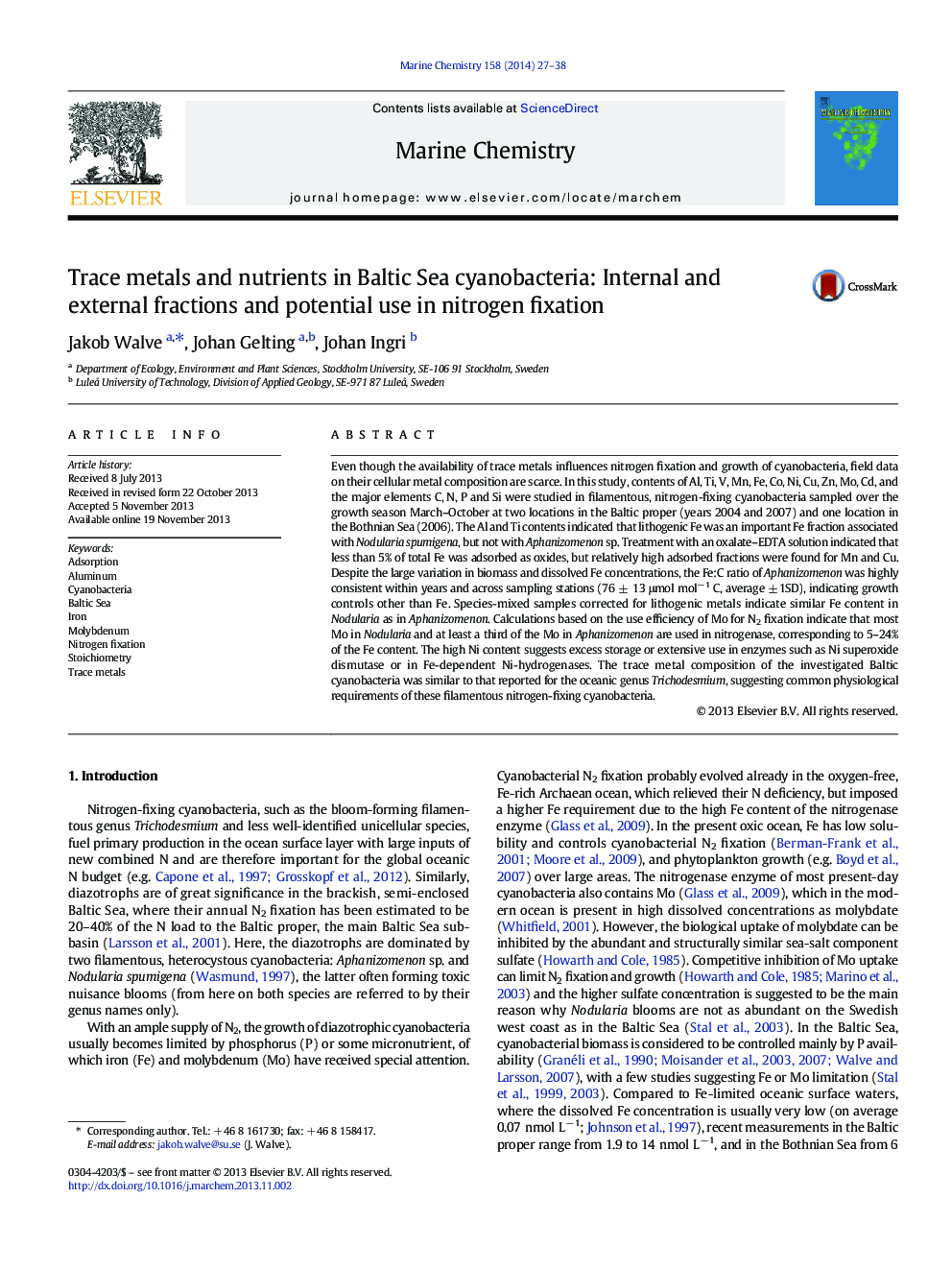| کد مقاله | کد نشریه | سال انتشار | مقاله انگلیسی | نسخه تمام متن |
|---|---|---|---|---|
| 1262962 | 1496677 | 2014 | 12 صفحه PDF | دانلود رایگان |
• We studied trace metal contents of Baltic Sea nitrogen-fixing cyanobacteria.
• Lithogenic Fe was associated with Nodularia spumigena but not with Aphanizomenon sp.
• The Fe:C ratio of Aphanizomenon sp. varied little within years and between sea areas.
• 30–100% of Mo is used in nitrogenase, corresponding to 5–24% of the Fe content.
• The metal composition was similar to that reported for the genus Trichodesmium.
Even though the availability of trace metals influences nitrogen fixation and growth of cyanobacteria, field data on their cellular metal composition are scarce. In this study, contents of Al, Ti, V, Mn, Fe, Co, Ni, Cu, Zn, Mo, Cd, and the major elements C, N, P and Si were studied in filamentous, nitrogen-fixing cyanobacteria sampled over the growth season March–October at two locations in the Baltic proper (years 2004 and 2007) and one location in the Bothnian Sea (2006). The Al and Ti contents indicated that lithogenic Fe was an important Fe fraction associated with Nodularia spumigena, but not with Aphanizomenon sp. Treatment with an oxalate–EDTA solution indicated that less than 5% of total Fe was adsorbed as oxides, but relatively high adsorbed fractions were found for Mn and Cu. Despite the large variation in biomass and dissolved Fe concentrations, the Fe:C ratio of Aphanizomenon was highly consistent within years and across sampling stations (76 ± 13 μmol mol− 1 C, average ± 1SD), indicating growth controls other than Fe. Species-mixed samples corrected for lithogenic metals indicate similar Fe content in Nodularia as in Aphanizomenon. Calculations based on the use efficiency of Mo for N2 fixation indicate that most Mo in Nodularia and at least a third of the Mo in Aphanizomenon are used in nitrogenase, corresponding to 5–24% of the Fe content. The high Ni content suggests excess storage or extensive use in enzymes such as Ni superoxide dismutase or in Fe-dependent Ni-hydrogenases. The trace metal composition of the investigated Baltic cyanobacteria was similar to that reported for the oceanic genus Trichodesmium, suggesting common physiological requirements of these filamentous nitrogen-fixing cyanobacteria.
Journal: Marine Chemistry - Volume 158, 20 January 2014, Pages 27–38
